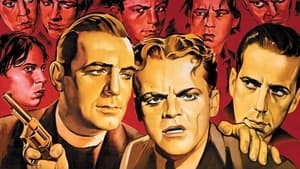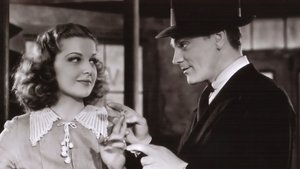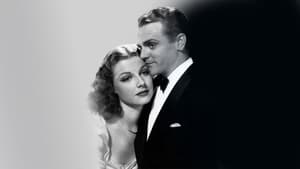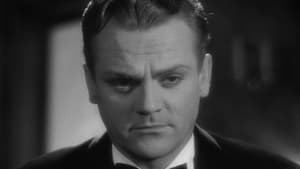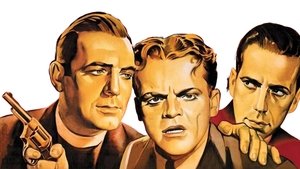Contact: [email protected]
Video Sources 0 Views

Synopsis

Introduction
“Angels with Dirty Faces Colorized,” a classic crime drama directed by Michael Curtiz and starring James Cagney and Humphrey Bogart, has captivated audiences since its release in 1938. Known for its gritty portrayal of urban life and compelling performances, the film remains a cornerstone of cinematic history. Now, with the release of a colorized version alongside the original black and white, viewers are faced with a choice: which rendition of this iconic tale is truly worth watching? In this comprehensive article, we delve into the merits of both the colorized and black and white versions of “Angels with Dirty Faces,” helping audiences determine which one best suits their preferences.
Read Media File Transfer Agreement: Terms and Conditions
Read FAQ
Understanding Colorization in Movies
Colorization, the process of adding color to black and white films, has been a source of debate in the film industry for decades. Advocates argue that it breathes new life into old classics, making them more visually appealing and accessible to modern audiences. However, purists often contend that it compromises the authenticity and artistic integrity of the original work. Despite the controversy, colorization has become increasingly prevalent, with many classic films undergoing the process to attract new generations of viewers.
The advent of colorization technology in the 1980s marked a significant advancement in film restoration and preservation. By digitally adding color to previously monochrome films, studios aimed to update older movies and appeal to younger audiences. While colorization has its proponents, it also faces criticism from those who believe it alters the director’s original vision and detracts from the historical significance of the work.
The Case for Preservation: Pros and Cons of Colorization
Colorization presents both advantages and disadvantages. On one hand, it can revitalize old classics, making them more visually appealing and engaging for contemporary audiences. By adding color, filmmakers can enhance the viewing experience and attract new viewers who may be put off by black and white films. However, detractors argue that colorization compromises the authenticity and artistic integrity of the original film. By altering the visual composition and atmosphere, colorization can detract from the director’s original vision and diminish the historical significance of the work. Additionally, colorization may erase important cultural and aesthetic markers that contribute to the film’s significance.
A Closer Look at the Colorized Version of Angels with Dirty Faces Colorized
Directed by Michael Curtiz, “Angels with Dirty Faces Colorized” follows the story of two childhood friends who take divergent paths in life: one becomes a notorious gangster, while the other becomes a priest. With the release of the colorized version, viewers can experience the charm and grit of this classic crime drama in vivid detail. The addition of color breathes new life into the film, enhancing the visual aesthetic and bringing out the nuances of the characters and settings. From the smoky alleyways to the dimly lit speakeasies, colorization adds depth and dimension to the film, inviting viewers to immerse themselves in its atmospheric world.
The Original Charm: Exploring the Black and White Aesthetic of Angels with Dirty Faces Colorized
While the colorized version of “Angels with Dirty Faces” offers a fresh perspective on the film, there is a timeless elegance to the original black and white aesthetic. The stark contrasts and moody lighting of black and white cinematography capture the grit and tension of the film with a classic charm. For purists and cinephiles, the black and white original remains the definitive viewing experience, preserving the film’s historical authenticity and artistic integrity. The decision to colorize “Angels with Dirty Faces Colorized” raises questions about the balance between modernization and preservation in film restoration.
Comparing Versions: Color vs Monochrome
The colorized version of “Angels with Dirty Faces” introduces a new dimension to the film, with vibrant hues and enhanced visuals that bring the story to life in vivid detail. The addition of color adds depth and realism to the characters and settings, creating a more immersive viewing experience for audiences. However, some viewers may argue that the colorization detracts from the film’s authenticity and atmosphere, diluting its impact and emotional resonance. While the vibrant colors may draw in new viewers, they risk altering the director’s original vision and compromising the historical accuracy of the work.
Considering Audience Preferences and Cinematic Integrity
In deciding which version of “Angels with Dirty Faces” to watch, it’s essential to consider both audience preferences and cinematic integrity. While colorization may appeal to modern audiences accustomed to vibrant visuals, it’s important not to lose sight of the film’s original artistic intent and historical context. As viewers, we must strike a balance between embracing technological advancements and preserving the authenticity of classic cinema. Whether watching “Angels with Dirty Faces” in color or black and white, one thing is certain: the film’s legacy will endure for generations to come. As audiences continue to grapple with the implications of colorization, it’s essential to appreciate the value of both versions and the unique viewing experiences they offer.
The Journey of Restoration: Angels with Dirty Faces’s Film History
The release of the colorized version of “Angels with Dirty Faces” marks another chapter in the film’s storied history. Since its release in 1938, the film has garnered critical acclaim and earned a dedicated following among classic film enthusiasts. Over the years, “Angels with Dirty Faces” has undergone various restoration efforts to ensure its longevity and relevance for future generations of viewers. Collaborations between studios and preservationists have played a crucial role in maintaining the film’s legacy and cultural significance. From the preservation of original film prints to the digitization of archival materials, these efforts ensure that “Angels with Dirty Faces” remains accessible and appreciated for years to come.
Reception, Relevance, and Legacy of Angels with Dirty Faces
“Angels with Dirty Faces” remains a timeless classic of crime drama, resonating with audiences for its gripping narrative and powerhouse performances. With its gritty portrayal of urban life and moral ambiguity, the film continues to captivate viewers and cement its status as a landmark of 1930s cinema. The release of the colorized version introduces “Angels with Dirty Faces” to a new generation of viewers, ensuring its continued relevance and legacy in the annals of film history. Whether watching the film in color or black and white, “Angels with Dirty Faces” remains a testament to the enduring power of storytelling and the timeless appeal of classic cinema.
Final Verdict: Which Version Is Worth Watching?
In the end, the decision of whether to watch the colorized or black and white version of “Angels with Dirty Faces” ultimately comes down to personal preference. Both versions offer unique viewing experiences, each with its own merits and drawbacks. For those who appreciate the vibrant visuals and enhanced realism of the colorized version, it offers a fresh perspective on a classic film. However, for purists and cinephiles, the black and white original remains the definitive viewing experience, preserving the film’s historical authenticity and artistic integrity.
Ultimately, whether watching “Angels with Dirty Faces” in color or monochrome, one thing is certain: the film’s legacy will endure for generations to come. As audiences continue to discover and rediscover this timeless classic, its impact and relevance will continue to resonate for years to come.


